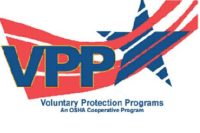 A personal account of the LOGCAP IV Program
A personal account of the LOGCAP IV Program
LOGCAP IV Program Background
The Logistics Civil Augmentation Program (LOGCAP) is a US Army-based program to provide services for contingency operations using existing civilian resources. Established in 1985, the LOGCAP Program is now on its fourth iteration and has three prime contractors who are allowed to bid on contingency work in support of U.S. and coalition forces in Afghanistan, Kuwait, Oman, Djibouti, and elsewhere as the need arises.
DynCorp International (DI) is the LOGCAP IV contractor who operates the Base Life Support functions in the southern half of Afghanistan, providing important services such as; food service, laundry facilities, bus shuttle operations, building and grounds maintenance, and base camp construction/deconstruction.
CH2M Hill has been a vital part of this $1.5Bn per year operation for the last six years and has been responsible for Risk Management, Health and Safety, Project Controls, Quality, and Engineering Services.
This program experience was gained from six years of challenging work managing the DI and CH2M Hill LOGCAP IV HSE Program to superior performance levels, while the Army conducted operations in the Middle East and other far remote places in the world.
The LOGCAP Program was the first opportunity that I had to build a program from scratch, based upon my own analysis of a Statement of Work (SOW) and past experience. Needless to say, there was some question in my own mind whether my theories and beliefs would work in practical application. A successful safety program is something that every organization states that they desire, but many do not have the know-how, attitude, or will to attain this goal. In addition to these three drawbacks, there are many more that the Occupational Safety and Health Administration (OSHA) cites that are very real and relevant to the success or failure of an active safety system of work.
The roadblocks to a successful safety system of work can be found at this link; Creating Change - HSE Program Obstacles, but can best be summarized as failures of management commitment to provide an atmosphere which allows all employees to make safety THE number one value in the firm. We will explore that topic further, later in this story.
Five Key Safety Process Steps
In order to have an effective and successful safety program that ensures the wellbeing of your employees, saves money, ensures that you will provide favorable performance, and helps ensure the profitability of your firm, there are five key steps:
Conduct a thorough review of the Statement of Work (SOW) and base the written process documents on this review
The safety professional must be intimately familiar with the SOW so that all major processes can be identified, planned to, and the major safety activities implemented. The safety professional must have an extensive knowledge of the risk management process and continually ask ‘what if’ questions during the planning phase, and this must happen well before the project commences.
An analysis of the LOGCAP SOW showed that over 450 HSE process documents would be required to account for the various tasks, functions, and jobs that were being conducted by the more than 18,000 employees working on behalf of the combined program team deployed to the Middle East.
Thankfully (from an HSE prospective) on the LOGCAP Program there was a protest period that delayed the actual start of active Task Orders (TO) for several months. It was this delay that allowed for the analysis of the SOW so that two questions could be asked and answered: “What activities or tasks are most likely to occur and what safety processes must be generated to account for these work tasks?”
Planning is essential to the establishment of an effective safety program but flexibility is important as plans and processes must be constantly reviewed and adapted as conditions change and new processes may have to be established for conditions that were not anticipated at the outset of the project. For instance, on the LOGCAP Program there are five TO’s in various theaters of operation ongoing and while the base safety system is used on all five, there is enough variation among the five, that some elements, such as the TO specific HSE Management Plan, must be tailored to the specific needs of the specific TO.
Ensure an exhaustive application of the Activity Hazard Analysis (AHA) process
The hazard recognition process, that includes employees participating with front line supervision, shall be completed to identify hazards of the work place before work begins, and the control measures specified are to be integrated into the work during the planning stage for safe execution.
Using the AHA development process, safe work practices and control measures will reduce or eliminate the potential health and safety hazards posed by TO activities, and they must be identified and referenced as needed for future ongoing work. An AHA must be conducted for all critical, pre-determined work activities. The AHA consists of a systematic process of identifying hazards associated with work activities and work task steps, assessing the risks of identified hazards associated with those task steps, and determining the measures necessary to control these risks.
All AHA documentation will be submitted to the Local HSE office to be reviewed and approved before being used by the front line supervisor in each day’s mandatory Safety Pre Task Planning brief. Documentation should be collected after approval and copied for document retention on site and also placed in a repository so that historical knowledge and perspective can be gained and shared.
Provide rigorous training for employees based upon the requirements of their job description
The objective of any HSE training process is to provide the required level of training and skill-based knowledge to all employees such that they feel they can productively complete a day’s work without undue exposure to illness or injury. In building an effective HSE program it was recognized that training is an essential part of an employee’s ability to perform a task safely and efficiently, and as such employee, training was provided in the form of new hire orientation, routine periodic, and on the job. This training is provided so the exposure to disease causing agents or hazardous activities that would cause employees to have an increased risk of illness or injury, is minimized.
The training program was established by first developing a matrix of the 629 separate job titles designated for the LOGCAP Program.
The requirements for each associated job description were analyzed and compared against the applicable OSHA standard, US Army regulations, and Activity Hazard Analysis so that training needs could be established, based upon the position description, regulations, and the hazards associated with the job.
Employee HSE training was facilitated by two distinct methods, which are both equally acceptable and will satisfy regulatory requirements for training. These two methods consist of the paper-based method used for remote locations with limited or no Internet capability, and the computer-based method. Computer-based training was established such that scores were automatically recorded and training certificates were immediately issued.
A staff of training coordinators is needed to keep up with the records for initial and annual training requirements and to send out notifications of expired training.
Review of all incidents (even near miss events), Root Cause Analysis, and Lessons Learned publication
Having an accident or serious incident has so many negative ramifications to a project, and these are compounded if events are not responded to properly so that situations do not recur. When the Accident Incident Safety Practice for the LOGCAP Program was developed it was realized that there were four primary purposes of the Practice:
- Describe the steps to be taken when an employee or a 1st Tier subcontract employee is involved in an accident or incident, regardless of whether a personal injury has resulted. This allows for timely notification to the client and senior management.
- Ensure standardization for reporting all accidents and/or incidents on the Program.
- Ensure timely reporting so that risk abatement activities will be undertaken to prevent further incidents immediately after any occurrence.
- Define the proper file naming convention for archiving and retrieval consistency such that historical records could be established and trends analysis performed.
In order to properly investigate, it is important to recognize that accidents usually have several causes. A quick “fault finding” investigation may easily blame employee error, while a fact-finding investigation may reveal a variety of unsafe acts and conditions which precipitated the accident and which could easily be remedied.
It is also important to recognize that injury and accident causes are rarely the same. By analyzing all aspects of the accident, the root causes will become more apparent.
While the “quick fix” type investigation may appear to be the easy way, determining the factors correctly the first time will reduce the total number of accidents. Lessons Learned for the incident investigation process were placed on a standardized template and distributed to all other Program sites so that staff could evaluate whether conditions were the same in their workplace, and thus allow the same or similar events to occur. With the above facts on the purpose of the Accident Incident Practice, Root Cause Analysis, and the Lessons Learned distribution in mind, a primer was developed for the LOGCAP Program that gave step-by-step instructions for each phase of the process, and this document is known as the Incident Investigation Process Note Set.
Obtain and enhance management commitment
“The basis for loss prevention and safety programs is that all accidents causing injuries or property damage or illness to personnel, are preventable. It is everyone's obligation to prevent accidents, and all personnel are expected to conduct business in a manner that actively integrates the elements of the Health, Safety, and Environmental Management System into applicable aspects of their operations”.
The above statement sounds nice doesn’t it?
It was lifted from the LOGCAP HSE Management Plan, and it is the management statement of commitment to Health, Safety, and the Environment. I can tell you that as a subcontractor trying to implement any program in a client organization you are subject to the mercy and whims of that organization.
From the start of the LOGCAP Program the HSE system was successful and had good metrics to prove it. For instance, during the first year of LOGCAP IV it was suggested that our Total Case Incident Rate should be established at 3.0 due to the high level of construction activity. We actually placed that year’s goal at 0.65 to reflect the current year goal of CH2M Hill and ended that year with a Total Case Incident Rate (TCIR) of 0.55.
I attribute that year and the next two years of success to the fact that we had an excellent safety program, and I was lucky enough to hire HSE Professionals to the Program who at least had an understanding of what I was trying to accomplish and how I was going about it.
The LOGCAP Program became more successful when there was management change at the Task Order and PMO level. Not that the previous management didn’t want employees to work safe, but the incoming management lived and breathed safety, and it was reflected in their direction to the workforce each and every day.
LOGCAP began living the Target Zero principles that had been borrowed from CH2M Hill and everything started to be tracked, measured, reported, and discussed. It is THESE attributes that make the ultimate difference in a safety program. Whatever gets the most attention will see the most improvement.
Senior Management began living by our written programs, especially Target Zero, the Post Action Review Board (PARB), and the Site Manager’s Accident Review Team (SMART) processes that review the results of all accidents and incidents and seek to make corrective action, including and especially, employee discipline.
Actions with consequences, imagine that!
We finally reached the bottom line and found the ultimate key to success for any HSE management system. If you have a committed workforce led by a caring and authoritative management staff, in which there are always consequences for negative actions, you will have a healthy and productive project where everyone knows how to play it safe and by the rules.
The “So What”
About four years ago a previous Program Manager asked me the question, “So what, what does the Army get for all the money that we spend on our safety program?”
This question forced me to quantify safety and clarify what’s in for everyone, not just the United States Government as a client, but the people who make up the LOGCAP Program and I have been able to determine that an effective safety management system provides the following positive outcomes:
- 100% assessment of hazards and identification of controls
- As the AHA process has become a recognized way of life, the result has been that people treat it as something beneficial, akin to brushing teeth in the morning to prevent disease. It is the AHA process that informs the Safety Pre Task Planning brief and allows everyone to know what the plan of the day is so that works is conducted in a safe and routine fashion.
- Reduced cost through incident avoidance
- Through exhaustive research it has been determined that each OSHA Recordable event results in a total cost of $65K, and as such, the positive application of our safety management system has saved the U.S. taxpayer approximately $40M annually, due to incident avoidance.
- Compliance with Army and OSHA requirements (the Law)
- This results in a positive public perception (no headlines) and affects the results placed in the Contractor Performance Assessment Reports System (CPARS), which determines the future ability to win Government contracts.
- Program-wide culture built on safety awareness, understanding, and acceptance of HSE as a core value
- Core values are constants that do not change, while a priority might change from day to day, and as such it was the development of safety as a core value by the management team and the acceptance of safety as a core value by the staff that led the LOGCAP Program to unprecedented heights of safety performance during the past six years.
- Greater efficiency through training and education
Effective training results in a workforce that understands their job and how to do it safely. Performing a job safely, and in a way that prevents accidents and injuries, leads to increased job satisfaction and a sense of accomplishment and allows for innovation in processes and work tasks for continuous improvement based upon job familiarity.
Summary
The five key safety process steps: a thorough SOW review, an exhaustive AHA process, rigorous employee training, timely incident review, and management commitment. These are the essence of a good Safety Management System. While they are easy to identify they are not easy to implement and demand time and commitment in order to be effective.
The good news is that if these five key safety process steps can be implemented in a work culture operating in the Middle East, where 64 different languages are spoken, by a workforce of 18,000, then they can be applied to any project or program anywhere with an equal level of success.
By using these five key process steps and implementing them passionately, our safety performance went from good success in the beginning of the program by completing calendar year 2009 with a TCIR of 0.55, to exemplary safety performance, finishing calendar year 2013 with a TCIR of 0.20 and a Days Away Restricted Time (DART) rate of 0.07.
Our HSE Program completed its first month accident-free in the month of January, 2014. What is especially noteworthy about this achievement is that January, a holiday month, had notoriously been one of our worst months, statistically speaking, for HSE performance. Through focused effort and attention we turned our worst into first.
The awesome news is that if these process steps are adopted, and implemented with passion and attention to detail, then your company too can achieve outstanding safety performance! Stay Safe!


